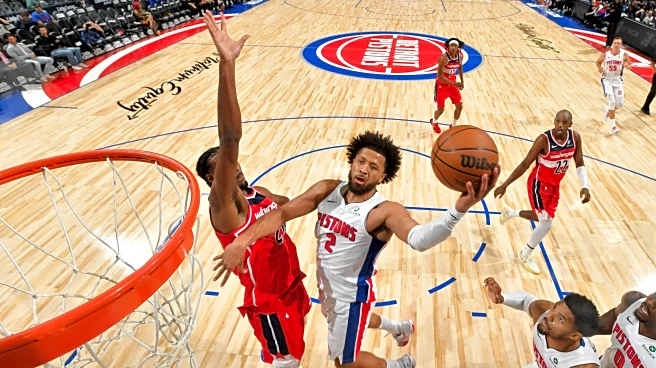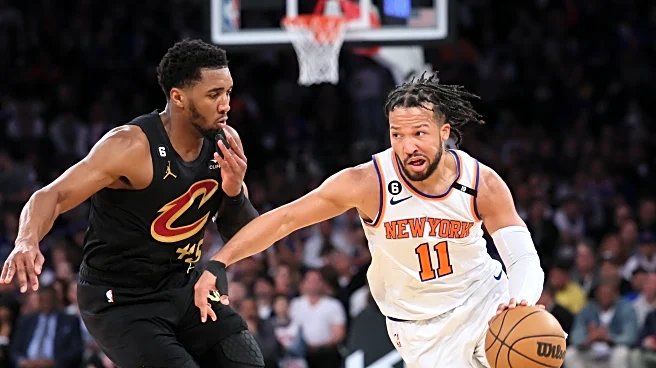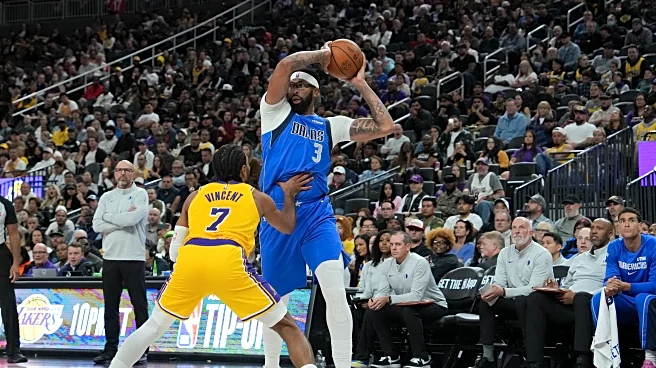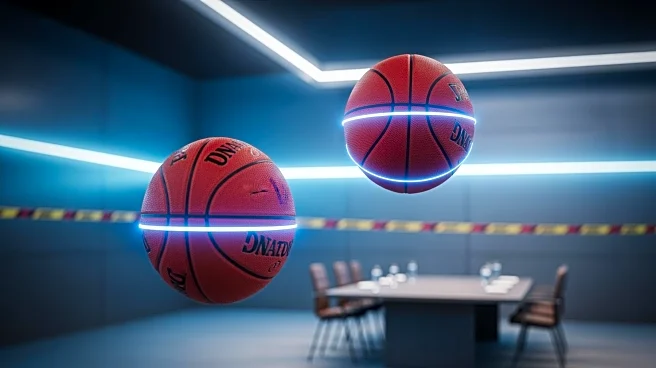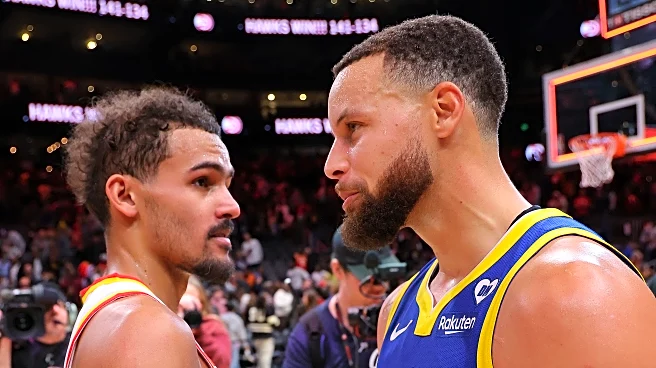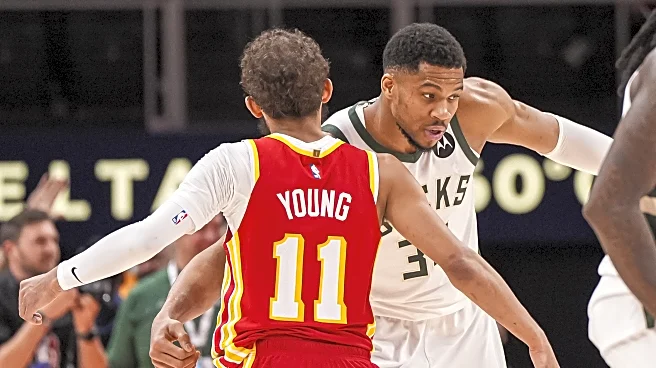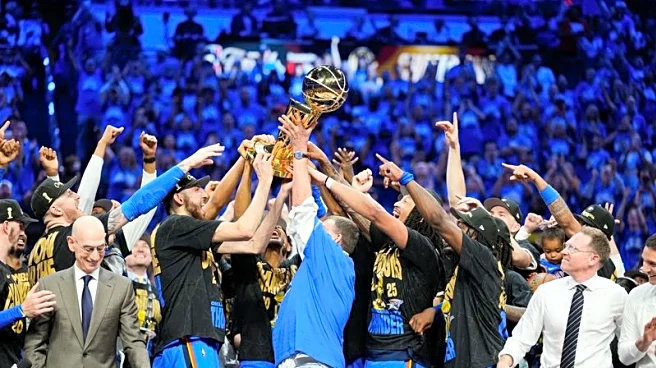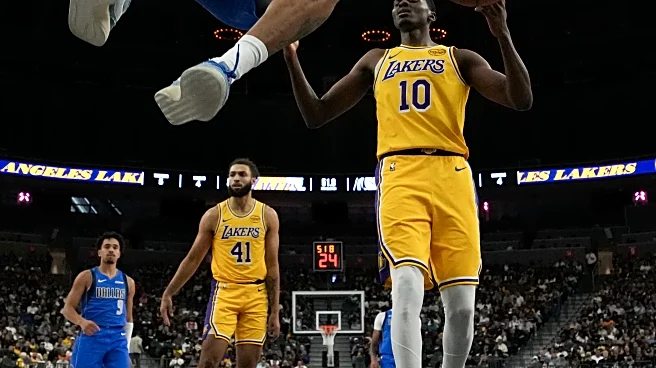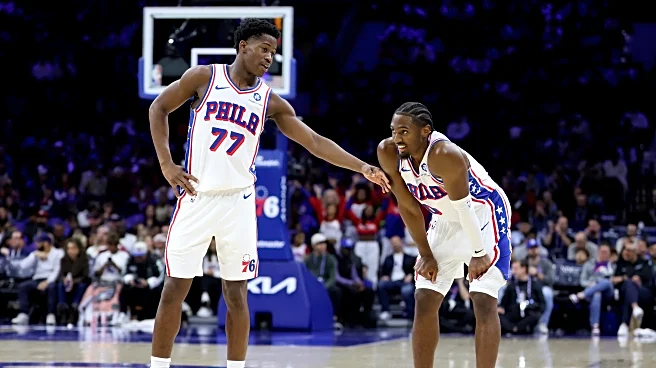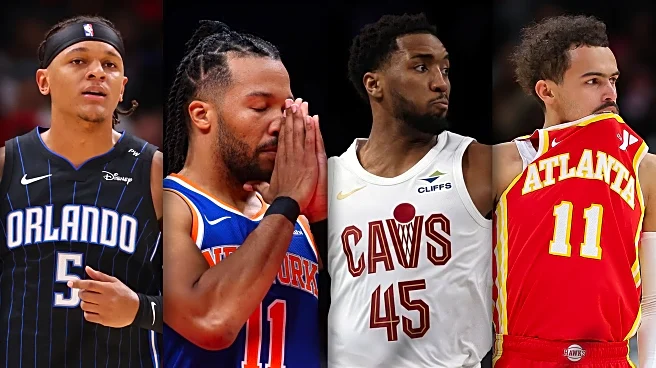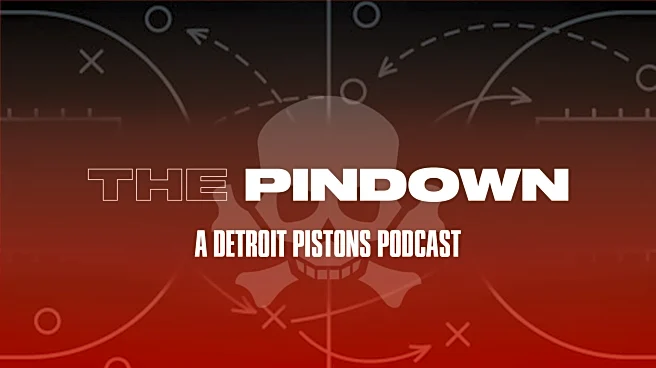For the better part of the past two decades, there has been a constant theme of the Detroit Pistons staying the course — for better and, usually, for worse. Struggling in the post-Going to Work era? You
can’t fire Joe Dumars; he built a champion. Cycle through coaches like tissue paper, but you can’t move off of your core players.
When change finally does come, it comes all at once, and the man who dynamited the previous situation is given a long leash. Stan Van Gundy was given the keys to the kingdom for the last four years with one plus-.500 season. The Andre Drummond era, whatever it ultimately was, lasted eight years. Then came Troy Weaver. he blew up a franchise and within a year, the longest tenured member of the team was his first first-round draft pick (Killian Hayes). Despite continually finishing at the bottom of the standings and several questionable personnel moves, he lasted four seasons.
Why rehash the past? Because it’s an interesting way to consider the present. A present that features so much promise and potential, and a future that is certainly not guaranteed success. What the franchise does in the wake of its most successful season in years is critical. And in the end, they … stayed the course.
There were no major offseason signings or consolidation trades. The Pistons tripled their win total a year ago on the backs of budding superstar Cade Cunningham, some promising young potential, and some one-dimensional but highly efficient role players, who created the space for all those young guys to operate in.
They gave Cade his post-rookie max, kept all their young players, and swapped out veteran talent for veteran talent. They stayed the course.
Out goes Tim Hardaway Jr., in comes Caris LeVert. Out goes Malik Beasley, in comes Duncan Robinson. Out goes Dennis Schroder, in comes a healthy Jaden Ivey (or so we hoped). The team will still live and die on the continued growth of that young core — Cade, Ivey (when healthy), Ausar Thompson, Ron Holland, Jalen Duren, and Isaiah Stewart.
That can be terrifying for a lot of Pistons fans. They have seen staying the course go terribly, terribly wrong. They see the Eastern Conference as ripe for the picking, with no clear powerhouse. They see a bunch of young talent that might not be a good enough star to play alongside Cade. They see the Orlando Magic adding Desmond Bane and the Atlanta Hawks adding Nickeil Alexander-Walker and Kristaps Porzingis, and wonder if they’re letting teams pass them by.
No, the Pistons didn’t necessarily get better this offseason, but I think they will be better.
I believe in the core young talent of this team, and I also believe people are sleeping on what the offseason additions of Robinson and LeVert allow them to do.
Let’s start with the young core.
The Core
Cade Cunningham
Cade Cunningham is getting better every season, and he was already on a third-team All-NBA tier. This season he could become a top-10 player in the NBA with a massive offensive responsibility, growing defensive chops, and enough help around him to allow him to not run out of gas late in games.
He has looked electric in limited minutes this preseason, and the core of what he needs to improve is so clear, and so seemingly attainable, I’ll be shocked if he doesn’t take steps in the right direction. It’s all about cutting down turnovers, improving perimeter shooting, and finishing better inside for Mr. Cunningham.
If Cade can go from 5 free throws per game to 7.5 free throws per game, it’s a huge sign of growth. If he can get his 3-point shooting consistently into the 39% range, it opens up the rest of his game. If he can cut a turnover per game from his ledger, the entire team becomes more effective on offense.
Ausar Thompson
Then we get to Ausar Thompson. I don’t care that the Pistons have maybe the league’s best shooting coach on their roster. Fred Vinson isn’t turning Thompson into a 3-point threat overnight. It’s going to take years. YEARS. To ever get Thompson from abject disaster to acceptable. But there are plenty of ways Thompson can improve his game while still being devoid of the threat of outside scoring.
The Pistons know that too, and that is why Thompson has been working so prodigiously this offseason on his ball handling and playmaking skills. He’s not going to confused for a point guard anytime soon, but even in the preseason, we’ve seen Thompson effectively take the ball up the floor most minutes when he playing. That takes a huge load off Cade and creates driving and assist opportunities for Ausar. If the other Thompson twin can become an effective playmaker, it allows him to be effective without scoring and allows the Pistons to squeeze even more time to deploy his All-NBA-level defense.
Jalen Duren
The name of the game for Jalen Duren is defense. Learn how to play it much better. Duren is a great rebounder and has unbelievable rim-running chemistry with Cunningham, so it’s almost always good when Duren finds himself on the floor. But he’s a non-shooting big who doesn’t play great defense. If Duren wants to be in Detroit long term, he has to provide the team a compelling reason to throw him a bag and not go the replacement-level center route to play in front of or behind Isaiah Stewart. Duren has threatened to hoist some threes this season, but I’d much rather have him focus on not being out of position and continuing to be a willing (but more careful) passer.
Jaden Ivey
Then there is Jaden Ivey. Ivey is out four weeks at least with knee discomfort. That’s scary. It’s also a bit heartbreaking after Ivey worked so hard to come back from a broken fibula. Secondary injuries aren’t uncommon as players overcompensate or put too much stress on one part of the body while another is healing. Let’s hope it is a temporary setback because if the improved Pistons can get the Ivey we saw last season, this would be top-3 team in the East. He was hitting down his perimeter shots, he was finishing better inside, and he was making slightly fewer wild mistakes as a distributor. It feels like Ivey wants to be great. I’m not sure he ever gets there, but this is the season he needs to show he has a long-term spot playing alongside Cunningham.
Ron Holland
Ron Holland looks ready to take the leap. He looks much strong, much more confident, and much more skilled as he enters year two. That’s a scary proposition for a player who already looked like he was contributing to winning basketball as a rookie who didn’t quite know what he was doing on the floor. Holland could become a mainstay alongside Ausar as a two-person wrecking crew on defense who also can get up and down the floor and create transition scoring opportunities.
You always need players who have the juice to make it through an 82-game season and be primed to make noise in the playoffs. I have no question Holland has the juice. I do question whether he has the shooting chops to be a plug-and-play at multiple positions on the floor, but his shot certainly looks smooth these days. Still, there is a long way to go from 23% shooter from deep to somewhere respectable.
Isaiah Stewart
I’m not saying I want it to happen, but it does feel like we’re going to see more two-big lineups from the Pistons this season. It’s a bit in vogue right now to deploy multiple bigs, the Pistons still have some depth issues at power forward, and Stewart, Detroit’s best interior defender, has talked about reintroducing the three-ball to his game more consistently. As long as it doesn’t take away from Stewart’s ability to be one of the most effective interior defenders in the NBA, I’m all for it. Stewart is never going to be a guy who is a prolific inside scorer — he just doesn’t have the size for it. Instead, he can subsist on broken plays, putbacks, and plenty of perimeter shots. There’s no reason not to let them fly, Beef Stew. Let’s make it happen.
The Vets
After running through nearly all members of the young core for the Pistons, we need to turn to the straws that turn all the drinks — the veteran players who know how to shoot, know where to be, and create the opportunities for the young guys to show off their skills.
Tobias Harris
The steady hand of the Detroit Pistons, Unc is a highly paid security blanket, and I mostly mean that as a compliment. When you need a score, Harris knows how to score. When you need someone to communicate defensively and put players in the right spots, he knows how to get it done. He’s a steady 15 points every night, never takes too many shots, and doesn’t give the game away on defense. He’s also a player the young guys look up to tremendously, and is an important a locker room presence as the Pistons have.
Duncan Robinson
I’m most excited for Duncan Robinson to join the Pistons this season. Is it because I think he’s going to be able to replicate what Malik Beasley provided last season? No. Not even Beasley could have delivered a season that good again. It was an outlier, and Beas was primed for regression. After Malik’s legal troubles forced the Pistons to explore alternative options, the Pistons shifted focus to Robinson. He should be able to provide the kind of season Robinson typically does, which is also a typical very good shooting season from Beasley. He’ll also do it as a 6-foot-7 forward instead of as a 6-foot-4 guard. That height difference will make all the difference.
There were games last season where the Pistons were trotting out Beasley as a defacto small foward because they needed his shooting on the floor but were trying to hide his defense. It put Detroit in a lot of awakward defensive positions. Robinson will never be confused for an all-world defender, but he can hold his own, and he can do it at a legit 6-foot-7. Being able to slide Duncan in at small foward, or even power forward depending on the matchups allows Detroit much great flexibility in what the makeup of the backcourt could look like. It opens up more space for Ivey, Holland, or even players like Marcus Sasser or, dare I say, Daniss Jenkins.
Robinson is also a better secondary playmaker than Beasley was, and when defenses force Robinson off the line, the ball won’t stick. He will drive and kick and keep the offense humming. I am a believer.
Caris LeVert
I have much less faith in LeVert as a player, but the logic still holds. LeVert is 6-foot-6 and can play three positions, including point guard if needed. His size allows the Pistons to make space for an undersize non-shooting guard who can score like Sasser. Or the team could plug LeVert in at point while Cade is resting and see if they can get a chaos and shooting lineup on the floor with Stewart, Thompson, Holland, and Robinson all sharing the floor. Big-time defenders, big-time shooters, big players.
Lineup versatility and improved defense is what I think the Pistons are after this season. They are moving away from relying on effective, but one-note shooting vets like Hardaway and Beasley. Instead, they will throw out plenty of lineups with defensive and offensive versatility, keep their heads above water on offense, and really amp up the power of their defense.
Will it work? It all works on paper until the moment your team experiences a scoring drout and suddenly you have no idea where your points are going to come from. But I do think this will be just as much of a fan-favorite team as last year, just with a different flavor profile.
It should be a fun season, and one where the Pistons announce themselves as mainstays in the Eastern Conference playoff picture. This team is here, this team is dangerous, and it’s not going anywhere.
